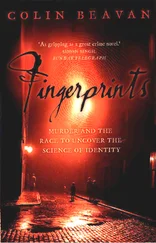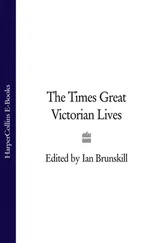The Female Detective
(1864) by Andrew Forrester; and 'The Modern Science of Thief-taking',
House-hold Words,
13 July 1850.
68
One case that turned on such evidence . . . Greenacre was hanged in May 1837.
For Greenacre's capture, see
Dreadful Deeds and Awful Murders: Scotland Yard's First Detectives
(1990) by Joan Lock.
69
In 1849 the London detectives . . . railway-station locker.
For the Mannings' murder of Patrick O'Connor, see
The Bermondsey Horror
(1981) by Albert Borowitz and MEPO 3/54, the police file on the case.
69
The detectives . . . steamships.
During the investigation - on 1 September 1849 - the
Illustrated London News
drew consolation from the fact that 'detection is sure to dog the footsteps of crime - that the guilty wretch, flying on the wings of steam at thirty miles an hour, is tracked by a swifter messenger - and that the lightning itself, by the wondrous agency of the electric telegraph, conveys to the remotest parts of the kingdom an account of his crime, a description of his person'.
69
Whicher checked the hotels . . . against the killers.
Details of Whicher's role in the investigation from MEPO 3/54 and
Dreadful Deeds and Awful Murders: Scotland Yard's First Detectives
(1990) by Joan Lock.
69
two and a half million copies.
Figure from
Victorian Studies in Scarlet
(1970) by Richard D. Altick.
69
A series of woodcuts . . . dashing action heroes.
In
The Progress of Crime; Or, The Authentic Memoirs of Maria Manning
(1849) by Robert Huish.
70
He awarded Whicher . . . PS15. From MEPO 3/54.
70
The next year . . . the detective had found.
From 'The Modern Science of Thief-taking',
House-hold Words,
13 July 1850.
71
In east London in
1829 . . .
her next two children, Saville and Eveline.
As well as
The Great Crime of 1860
(1861) by J.W. Stapleton, this account of the Kent family's past draws on certificates of birth, marriage and death, and documents in the Home Office file HO 45/6970.
CHAPTER 6
79
Joshua Parsons was born . . . hardy perennials.
Information about Parsons from census returns of 1861 and 1871 and from 'Dr Joshua Parsons (1814-92) of Beckington, Somerset, General Practitioner' by N. Spence Galbraith, in
Somerset Archaeology and Natural History,
issue 140 (1997).
80
physicians who specialised . . . perfect little devils from birth'.
From 'Moral Insanity', in the
Journal of Mental Science,
27 July 1881. In
The Borderlands of Insanity
(1875) Andrew Wynter wrote: 'It is agreed by all alienist physicians, that girls are far more likely to inherit insanity from their mothers than from the other parent . . . The tendency of the mother to transmit her mental disease is . . . in all cases stronger than the father's; some physicians have, indeed, insisted that it is twice as strong.' For writings by Savage and Wynter see
Embodied Selves: An Anthology of Psychological Texts 1830-1890
(1998), edited by Jenny Bourne Taylor and Sally Shuttleworth.
81
an almost naked woman stabbing the boy in the privy.
The idea that the killer had been naked was to recur - the
Western Daily Press
of 4 August 1860 pointed out that near the kitchen door, 'two taps of water could have been made use of to wash away any marks, if the person was nude'.
82
Objects could regain their innocence only when the killer was caught.
For an account of the way that objects are infused with significance during a detective investigation, and returned to banality afterwards, see
The Novel and the Police
(1988) by D.A. Miller.
82
the original country-house murder mystery.
The horrible circumstances in which Saville's body was found also played a part in establishing the conventions of this form. The corpse in a detective novel, wrote W.H. Auden in his essay 'The Guilty Vicarage: Notes on the Detective Story, by an Addict' (1948), 'must shock not only because it is a corpse but also because, even for a corpse, it is shockingly out of place, as when a dog makes a mess on a drawingroom carpet'. The classic country-house murder is an assault on propriety, an aggressive exposure of base needs and desires.
82
'sensitiveness . . . detective faculty'.
In
Villette
(1853).
82
'reckoned' em up'.
In 'A Detective Police Party',
House-hold Words,
27 July 1850.
83
'If you ask me to give my reason . . . safe keeping of the swell mobsmen.'
In 'The Police and the Thieves',
Quarterly Review,
1856. 'Between the detective and the thief there is no ill blood,' wrote Andrew Wynter in the same article; 'when they meet they give an odd wink of recognition to each other - the thief smiling, as much as to say, "I am quite safe, you know;" and the detective replying with a look, of which the interpretation is, "We shall be better acquainted by and by." They both feel, in short, that they are using their wits to get their living, and there is a sort of tacit understanding between them that each is entitled to play his game as well as he can.'
83
'That was enough for me'.
In 'A Detective Police Party',
House-hold Words,
27 July 1850.
83
'I could even notice the eye . . . saw him busy.'
From
The Casebook of a Victorian Detective
(1975) by James McLevy, edited by George Scott-Moncreiff, a selection of pieces from McLevy's autobiographical volumes
Curiosities of Crime in Edinburgh
and
The Sliding Scale of Life,
both published in 1861.
83
The journalist William Russell . . . comparing both'.
From 'Isaac Gortz, the Charcoal-Burner' in
Experiences of a Real Detective
(1862) by Inspector 'F', 'edited' by Waters.
84
'The eye . . . invisible to other eyes'.
From 'The Modern Science of Thief-taking',
House-hold Words,
13 July 1850. When Dickens accompanied Charley Field to a St Giles basement, he noted the detective's 'roving eye that searches every corner of the cellar as he talks'; he described the lanterns carried by Field's sidekicks as 'flaming eyes' that created 'turning lanes of light' ('On Duty with Inspector Field',
House-hold Words,
14 June 1851). For a discussion of surveillance and the eyes of the literary detective, see
From Bow Street to Baker Street: Mystery, Detection and Narrative
(1992) by Martin A. Kayman.
84
He once arrested . . . pick pockets.
From
The Times,
4 June 1853.
84
The seemingly supernatural sight . . . theories of Sigmund Freud.
For the fictional detective's ability to read faces and bodies as if they were books, see
Detective Fiction and the Rise of Forensic Science (1999)
by Ronald Thomas.
85
The standard text on the art of face-reading.
Lavater's essays first appeared in 1789; a ninth edition was published in 1855. See
Embodied Selves: An Anthology of Psychological Texts 1830-1890
(1998), edited by Jenny Bourne Taylor and Sally Shuttleworth.
87
Coolness was a prerequisite for an artful crime.
Читать дальше












